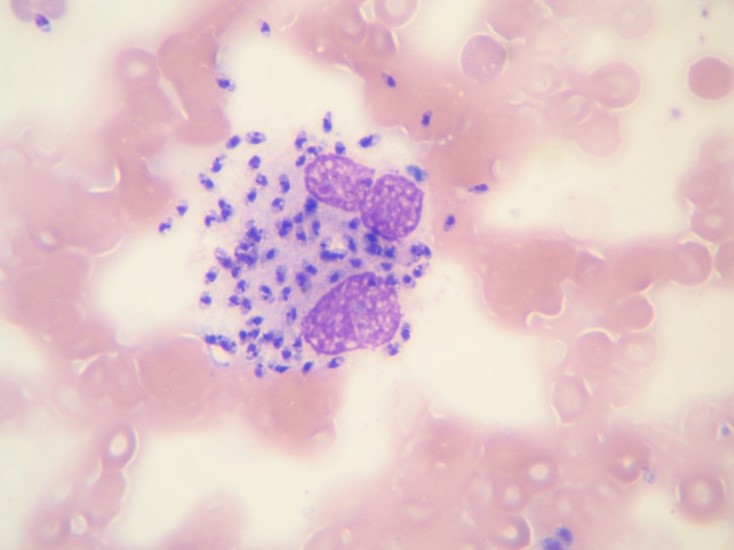Leishmania
(Leishmania spp.)
Leishmania spp. are protozoa transmitted by the bites of infected female phlebotomine sand flies, which may infect several wild and domestics animals, including cats. They are zoonotic.
Distribution
Clinical disease caused by Leishmania infantum has been described in cats in many countries including Italy, Switzerland, France, Spain, Portugal, Greece, Brazil and Iran. Leishmania amazonensis infection has been reported in Brazilian cats, whereas L. braziliensis has been reported in cats from Brazil and French Guiana. Leishmania mexicana and L. venezuelensis have been found in cats from the United States and Venezuela, respectively.
Clinical signs
Most cats infected by Leishmania spp. present subclinical infections. The most frequent clinical signs of Leishmania spp. infection in cats are skin lesions, including ulcerative, crusty, nodular or scaly dermatitis, and alopecia or a poor haircoat condition [1,2]. The most frequent non-cutaneous clinical signs reported include: lymph node enlargement, weight loss, nodular blepharitis, uveitis, panophthalmitis, decreased appetite, chronic gingivostomatitis and lethargy [1,2].
Diagnosis
The diagnosis of Leishmania spp. infection in cats can be confirmed by cytology with the detection of amastigotes forms within the cytoplasm of polymorphic nuclear cells or extracellularly in stained smears of skin lesions, bone marrow, spleen (Fig. 1) or lymph node aspirates. Serology (e.g. indirect immunofluorescence assay and ELISA) and PCR are also used. [1,2].

Figure 1. Intracellular and extracellular amastigotes of Leishmania infantum in a splenic smear (Image credit: Dr. G. Baneth)
Treatment
Allopurinol (10 mg/kg q12h) is usually effective in alleviating clinical signs of L. infantum infection in cats. Relapses may occur as in dogs. Meglumine antimoniate (5-50 mg/kg or 375 mg/cat q24h SC or IM under different protocols) has produced a good clinical response in some cases and it is recommended to use it combined with allopurinol [1].
Prevention and Control
The risk of L. infantum infection in cats can be reduced by applying a 10% imidacloprid plus 4.5% flumethrin collar [3]. Importantly, while flumethrin is safe for cats, other pyrethroid-based products should not be applied to cats, due to their natural sensitivity to this class of insecticide.
Public health considerations
All Leishmania spp. reported in cats are zoonotic, but the cat’s role as a potential reservoir host of these parasites is unclear.
References
[1] Pennisi MG, Hartmann K, Lloret A, Addie D, Belák S, Boucraut-Baralon C, Egberink H, Frymus T, Gruffydd-Jones T, Hosie MJ, Lutz H, Marsilio F, Möstl K, Radford AD, Thiry E, Truyen U, Horzinek MC. Leishmaniosis in cats: ABCD guidelines on prevention and management. J Feline Med Surg. 2013;15:638-642.
[2] Pennisi MG, Cardoso L, Baneth G, Bourdeau P, Koutinas A, Miró G, Oliva G, Solano-Gallego L. LeishVet update and recommendations on feline leishmaniosis. Parasit Vectors. 2015;8:302.
[3] Brianti E, Falsone L, Napoli E, Gaglio G, Giannetto S, Pennisi MG, Priolo V, Latrofa MS, Tarallo VD, Solari Basano F, Nazzari R, Deuster K, Pollmeier M, Gulotta L, Colella V, Dantas-Torres F, Capelli G, Otranto D. Prevention of feline leishmaniosis with an imidacloprid 10%/ flumethrin 4.5% polymer matrix collar. Parasit Vectors. 2017;10:334.
